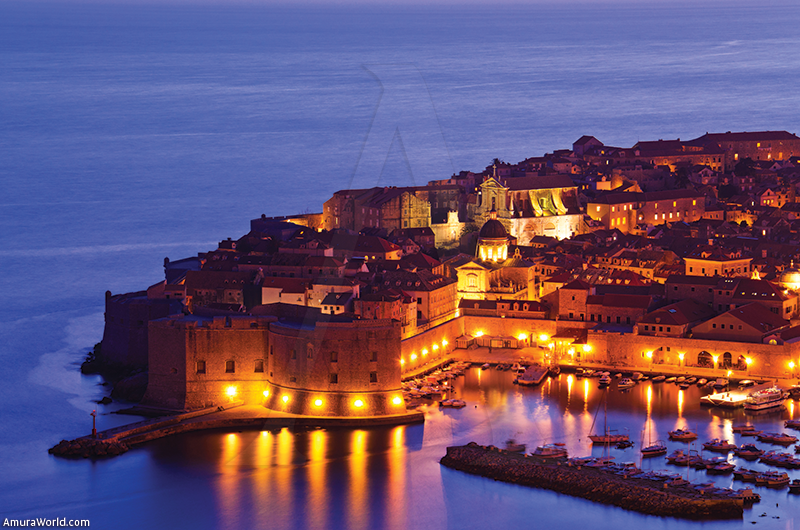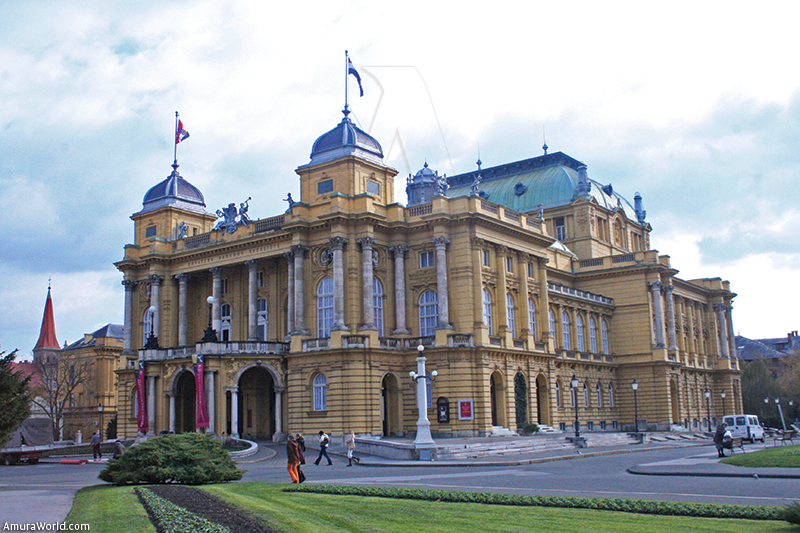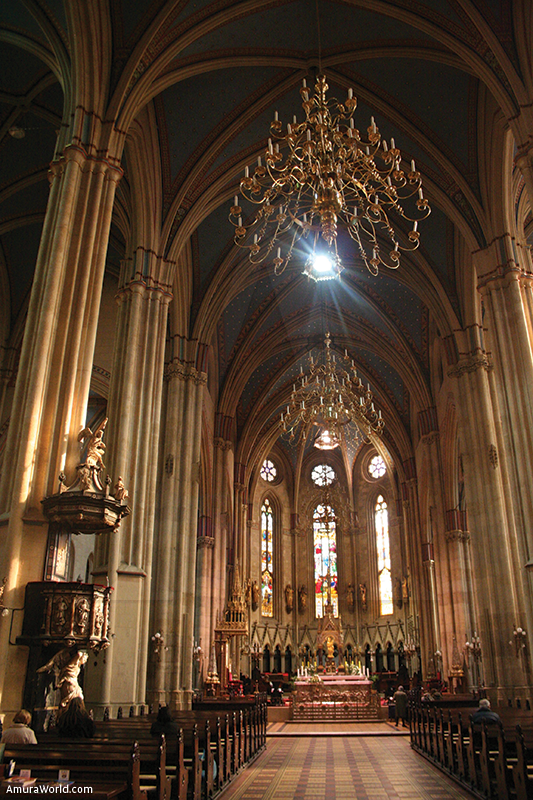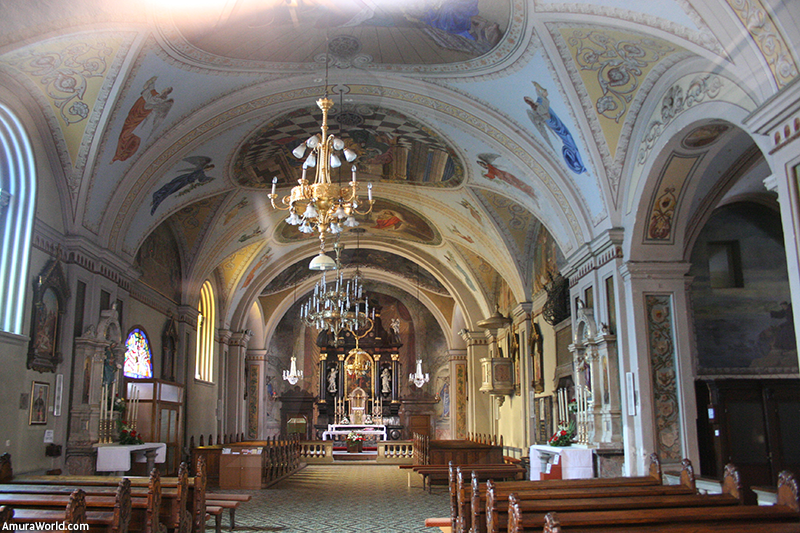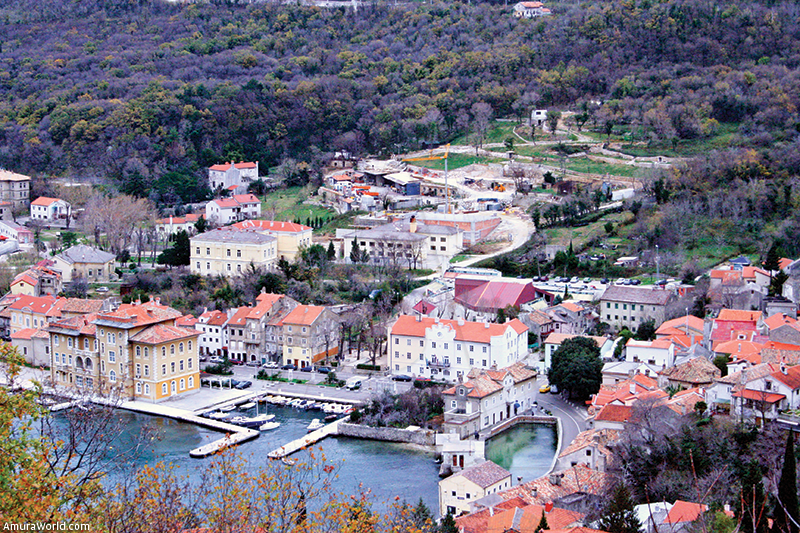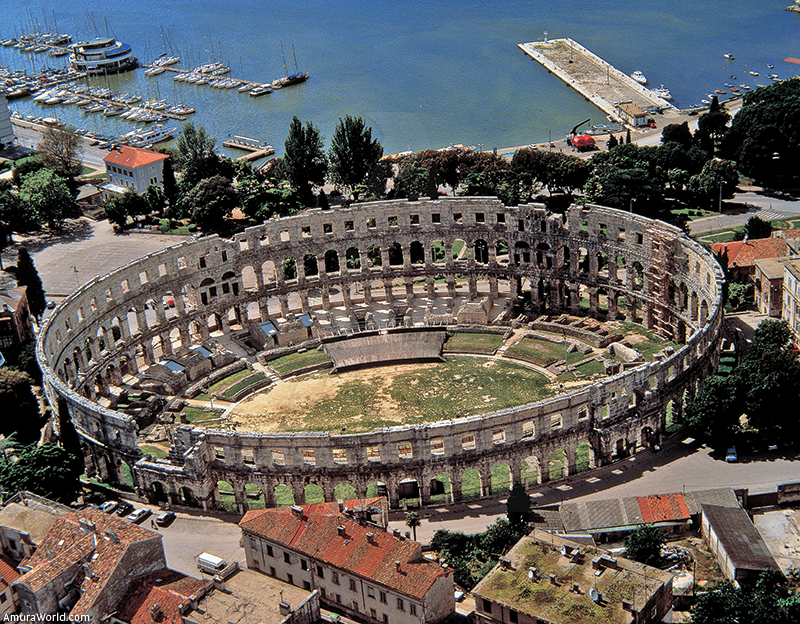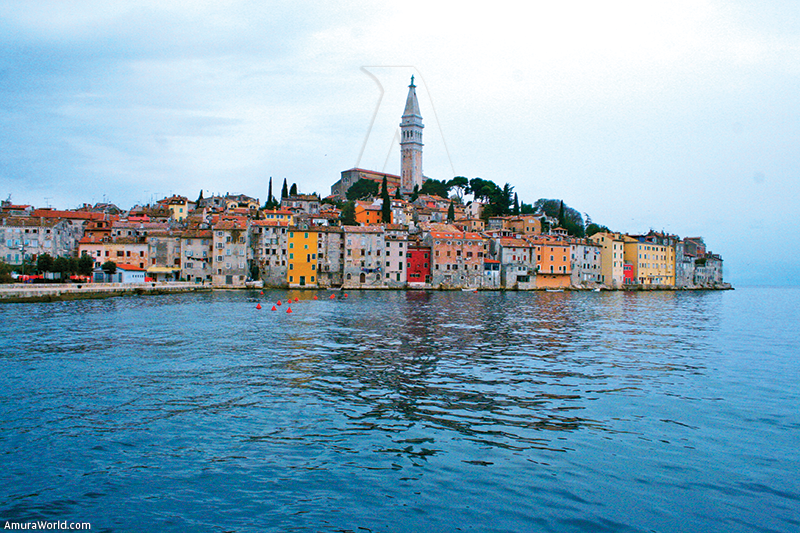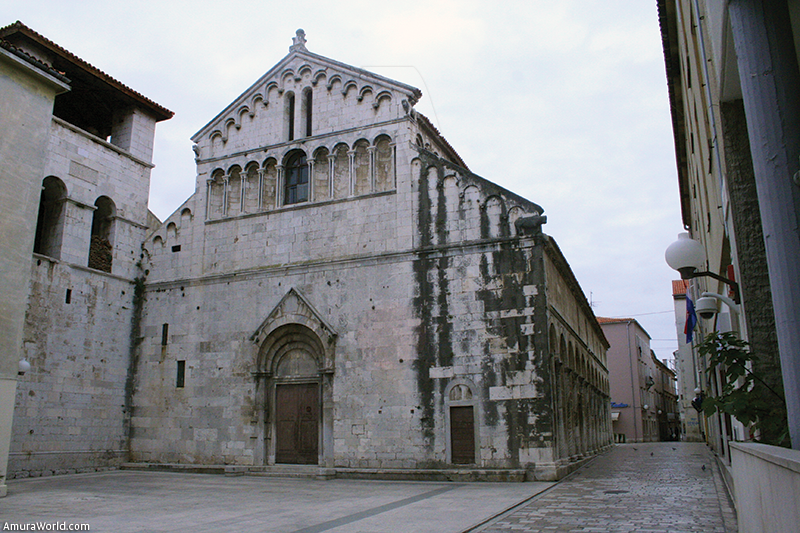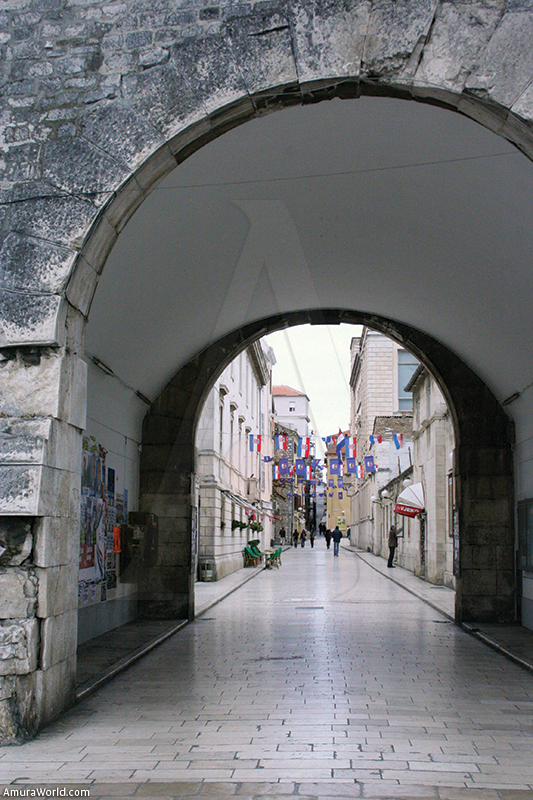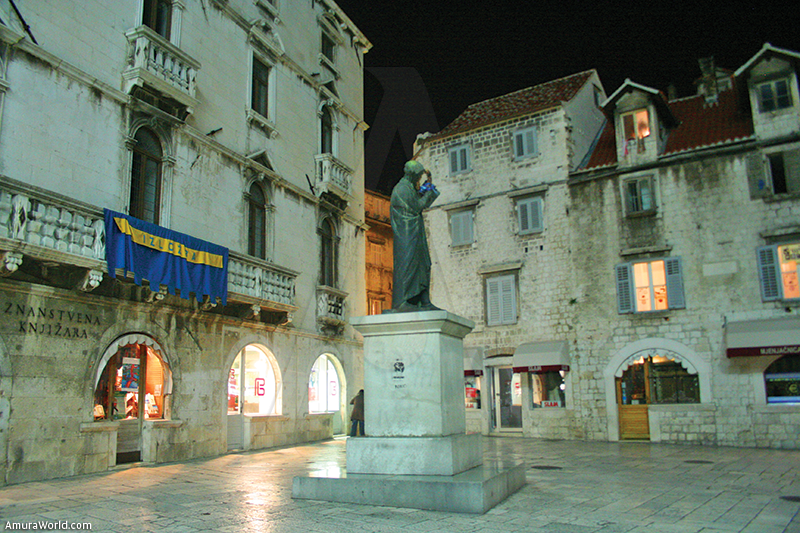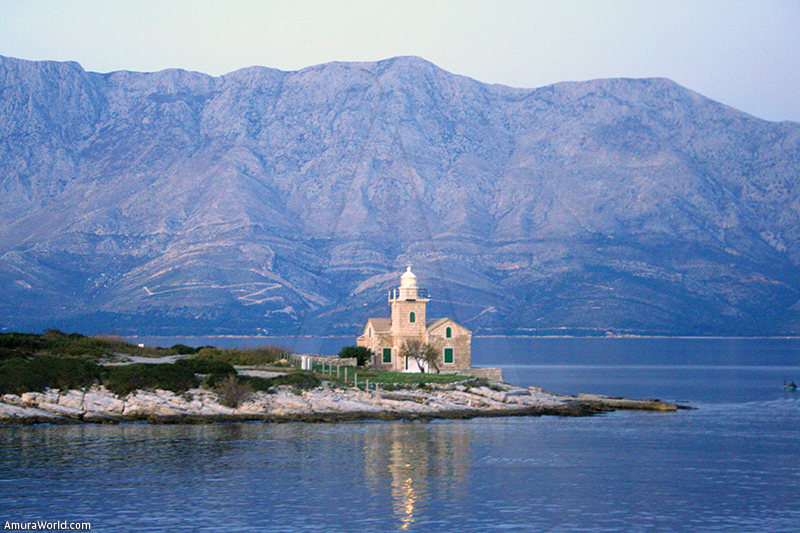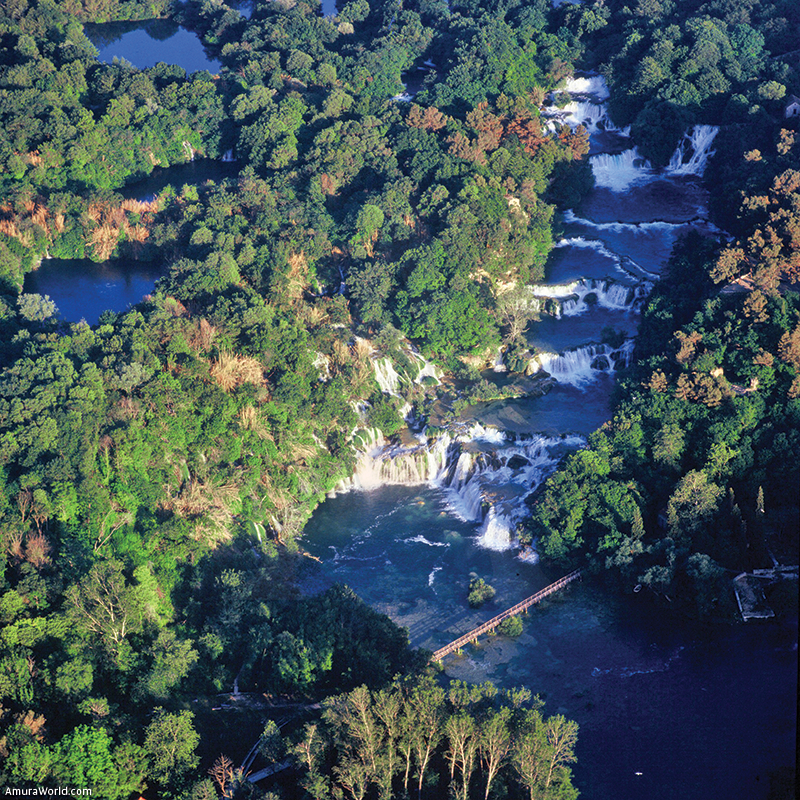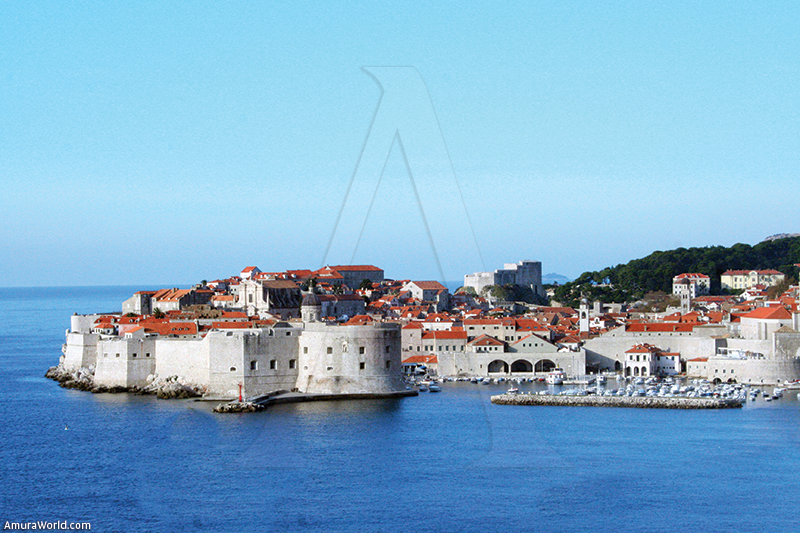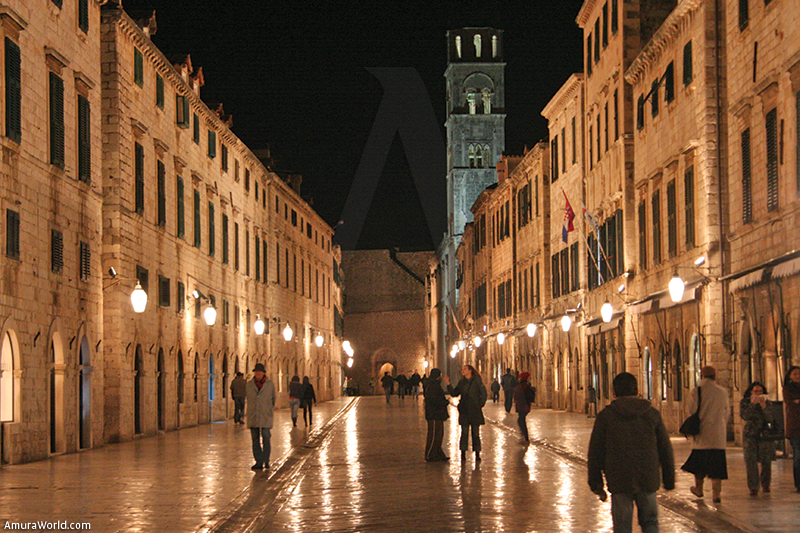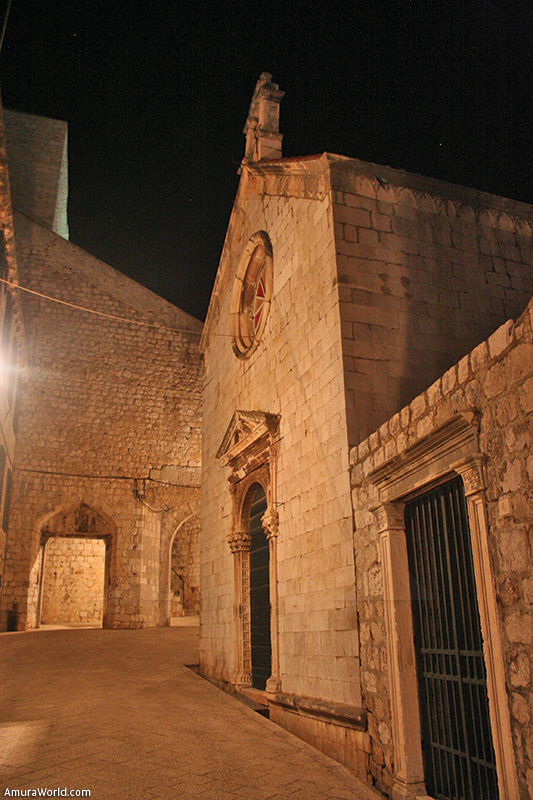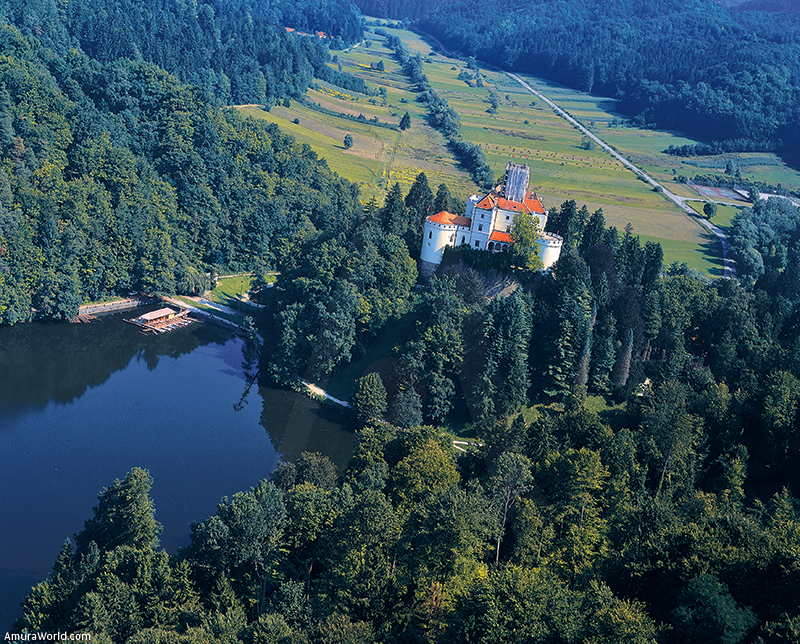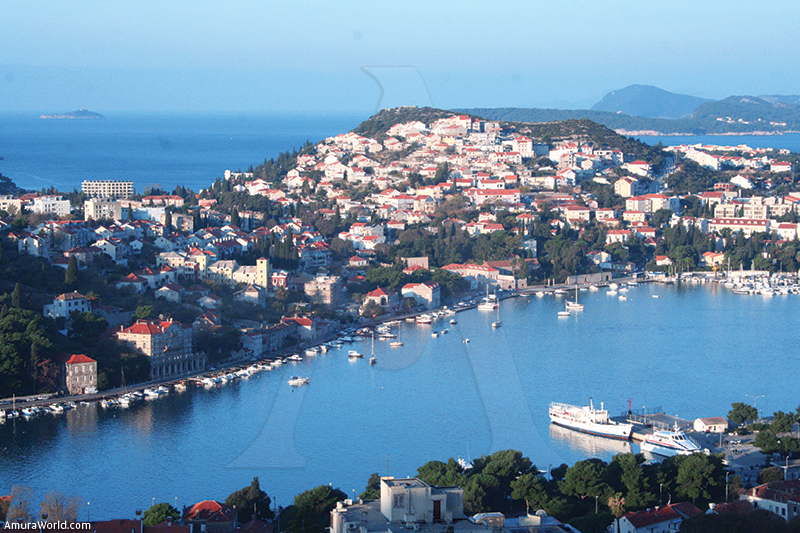A spell of forest, sea and fortified cities
When I discovered Croatia, time stopped and I allowed myself to be impressed by the mythology of its alleys and noble buildings. I was surprised by the majesty of the mountains and the colors of the coast. I faced the surprise of traveling an unknown country, unreported, and yet amazing. Then I wrote this story of a journey down a path that brings memories of recent, tragic and bloody wars that, through the lanes of history for almost 3000 years, has been leaving footprints in the Adriatic shore. Let me take you with me in a voyage through Croatia, one of the most beautiful regions of Europe.
Zagreb
Zagreb greets me with the light of a sunny day, with its lively market and bells announcing each hour. Zagreb is seductive; it is a loving city to be discovered walking down its majestic boulevards and medieval alleys. It captivates with the warmth of its people, the tram that runs through downtown with its memories of an era of old-Communist Europe behind the Iron Curtain. You can experience the sumptuous Baroque facades colored in yellow, green or white. The Regent Esplanade is my home in the capital city. It is a hotel full of history; an authentic palace recently restored preserving the style of its construction in 1924, when it received luxury travelers arriving on the Orient Express.
The morning is bright; the “dobardan” (good morning) is everywhere in joined with a cold breeze. Zagreb is divided into two parts; the Lower City, with its beautiful gardens, and the Upper Town, with its medieval air dominating the two hills. Donji Grad (Lower Town). It emerged in the eighteenth century with its straight streets from Trg Josip Jelačića, the iconic central plaza, and its neo-Baroque and Renaissance buildings. My head is full of words from the writer Ivo Andrić describing the intrigues of the streets with the creaking of the trams. I wander the Tornislava Avenue which is bordered by a beautiful park where the Pavilion of Arts and the Academy of Arts and Sciences are located. The avenue is outlined by a harmonious architectural ensemble, and the Masarykova, which leads to the elegant opera, surrounded by yet another park.
I am fascinated with Zagreb, with its mystical facades and ornate statues. Ilica Avenue seduces me. It is the most commercial zone full of shops and imposing buildings. I am surprised to discover elegant passages where I found the Kroata Bravata shop. They sell the most beautiful ties. This accessory was invented in Croatia. Its origin dates back to 1660 in the Croatian regiment, when officers started wearing colored handkerchiefs in their neck. When they visited Paris, King Louis XIV liked them so much that he wanted some for the Royal Regiment and designated it as cravate, from the Croatian word meaning crabete. This fashion went to England, with all kinds of patterns, including tassels and cords of different sizes. This accessory became a hallmark among the upper classes in the twentieth century to the present day. A good suit looks more elegant with a tie, as it reflects a man’s personality, his mood and character. The tie clip was invented in Croatia in 1906 by Slavoljub Penkala.
The lower town is a romantic setting. As if you emerge from a novel by Dostoievsky, Gornji Grad (Upper Town) is the old memory of Zagreb. Originally, it was two medieval villages on two adjoining hills. The bishopric of Kaptol was founded in the eleventh century. Kaptol and Gradec, both villages were surrounded by strong walls and separated by a stream that today is a pleasant pedestrian alley which houses cafes which are full of people. The old wooden houses have been replaced by elegant baroque buildings but remains of the wall and alleys take me back to the past. The Stone Gate, once the main entrance to the ancient city has become an important institution because of a singular fact. In 1731 a fire destroyed the wooden portal, but the painting of the Madonna and Child painted by an unknown artist remained intact. This created a myth and a legend that gives the door magical powers
Within the confines of this dark alley, I observe how people light candles, praying, making this door look more like a church. Its façade is enthroned by a statue of Dora, Romanesque heroin of the eighteenth century. I am impregnated by the smells of autumn as the sun hides behind the low clouds. The low light, the buildings and the Sabor (parliament) or the Banska Dvori (presidential palace) raise their elegance as the square leads me to the Lotrščak tower which was built in the thirteenth century to protect the south gate.
I am extremely surprised by a loud explosion. A cannon is fired. This happens every day at about midnight, when Zagreb rumbles with a strong shot that commemorates the battle against the Turks. Legend says that munitions fired at this same hour, killed a passing rooster. The Turks, who were besieging the city, seeing this fact, became discouraged and gave up attacking the city.
The Cathedral of the Assumption of the Virgin Mary is impressive to my eyes with its high towers and Gothic interior, which has been renovated throughout the years. The ceiling of the church of San Marco shines with its colored tiles representing the medieval blazon of Croatia and Zagreb. Its structure dates to the thirteenth century. Upon entering the Jesuit church Santa Catarina, I am struck by its Baroque style and beauty of the altar, dating back to 1720. I am fascinated by the stucco and ceiling medallions, a mysterious case where I can integrate. Carefully, I savor the pleasure of wandering around the Dolac with its outdoor market stalls, buying dried fruits or embroidery. Vendors smile at me, “dobardan”, “dovidenja” (goodbye), and “Hvala” (thanks). These are the only Croats sounds I can exchange with them, but the smiles and laughter are easily understood.
In the afternoon I walk from cafe to cafe, from the Funk to the Cica and the Taboo. I can observe how people interact with joy as they speak and smile to this stranger. They ask me where I come from and are surprised at my distant origin. Fascinated by such warmth, I challenge the cold weather to enjoy this wonderful and warm atmosphere, “cafeteando”, a favorite pastime of the Croats. Zagreb is romanticism with a Slavic flavor.
In the evening, I visited Mirogoj which is one of the most beautiful cemeteries in Europe (it is said that in Zagreb the dead have better accommodations than the living). I entered a long hallway covered with domes and marble built in 1876 by the famed architect Herman Bollé. It looks like a fortress from the outside and the inside houses monumental tombs with memorial plates made with the best of stones from the area. In the garden the statues and trees give this place a dramatic and romantic atmosphere.
From Zagreb to Rijeka
From my window at the Esplanade Regent, I can see the train station. I can relive the era of the elegant 20s while noticing that the sky is now overcast. Snow begins to fall. It is the first of the year. Driving down the streets wrapped in the melancholic and misty snow. It is enjoyable to see how the flakes whiten the parks. I head for the eastern hills to tour one of the most iconic towns central Croatia: Samobor. The discreet charm stems from its colorful traditional houses, a stream that runs through the village, its churches, its market and its shops. The snow is whitening the forested hills surrounding the town. The Gorje Samoborsko and the village seem like a Ferdo Livadic melody. A composer who wrote in 1833 “ Jos Hrvatska” (Croatia is not dead yet), the most famous patriotic song. It is a town that one can feel its heart vibrate.
Arriving in Karlovac, the ancient fortress built in 1579 to resist the Turks, I discover a historic center with baroque buildings and churches. I entered into a vibrant cafe to escape from the cold. “Dobardan, Odakle if?” (Hello, where you come from?) And the conversation begins as always with the cordial joy that characterizes central Croatia
The Velika Kapela mountains, have peaks rising over a thousand feet. The landscape becomes lush, covered with snow and pine trees with villages submerged in the mist, as a scene from a novel from Miroslav Kreleza. After going through a long tunnel, and down toward the sea, the snow stops falling. The coast appears at Rijeka, a large industrial port at the bottom of the Kvarner Gulf. It is full of islands and majestic buildings from the Austro-Hungarian style. It is also famous for its cafes and night life Discos. The view from the castle of Trsat, a XIII century fort is magnificent, it has beauty and majesty.
The Istria Peninsula
It is here that I begin my tour of the east coast of the Istrian peninsula. It is loaded with history that dates back to the Roman Empire, and with villages and hills falling into the sea. Opatija retains the arrogant nineteenth century residences, which at that time; it was the busy summer resort of the Austro-Hungarian Empire. Here, the pine forests seem to reach the green crystalline sea. I also enjoyed the majestic tour of the Kvarner Gulf Coast. The road now takes me into the mountains, where I discovered charming villages. I am now in Pula, the ancient Roman Polensium. It is mysterious and intricate, with alleys and Roman ruins. Pula lives to the rhythm of its past. A bride and groom are taking pictures in the great coliseum while guests sing and drink to their health. As this happens, I can see the citadel on the hill which seems to be watching the remains of the Roman wall, the triumphal arch of Sergius, the temple of Augustus and the V century Cathedral, with Roman sarcophagus instead of an altar. A fine rain begins falling on the pavement as I walk the alleys. The city goes to sleep in the cold while I imagine the animation in the time of the Romans and the tumult of tourists in the summer.
Rovinj astonishes me. It is the star port of Istria and a true treasure. The houses are latched by the sea on the north side of this perfect oval peninsula. The bell tower dominates the fairy tale scene, while the port is protected and alleys invite you to discover its mysteries. It is the perfect port, protected by 13 wooded islands and bathed by clear waters that attract many tourists in the summer, especially those who enjoy nudism.
In the silence of the night, bathed by an intense cold, I wander through the alleyways where some fugitive shadows are delineated by some solitary cats, and I feel I’m the protagonist of a story where the town belongs to me. The salty smell from the sea causes me to picture images of the pirates who attacked Rovinj who was forced to seek the protection from Venice in the thirteenth century. At daylight, the mystery is diluted to show the charm of a fabulous fishing village, with its market, tall houses overlooking the sea, the alleys and the wooded hills surrounding the town. Traveling through the hills of the interior of Istria, I discovered Pazin. A place forgotten in time and famous for the abyss in which Jules Verne was inspired to write his novel “Journey to the Center of the Earth”.
From Rijeka to Split
From Rijeka to Zadar, the road follows the arid coast of the Kvarner Golf. It is interrupted by striking bays and protected by the magnificent scenery of islands, dotted with charming fishing villages such as Bakar, Selce, Novi Vinodolski or Senj. At the foot of the impressive Velebit Mountains, at over 1,000 meters in altitude, the wind amazes me with its strength as it curls the Adriatic Sea that flows into small coves of crystal clear water.
Zadar in North Dalmatia is an ancient Roman colony surrounded by a XVI century wall and doors. The door to the City is the most monumental of all. Linear alleys contain typical townhouses and beautiful churches. St. Donat (IX Century), is a circular Byzantine style church, the most surprising of Dalmatia. The cathedral of Santa Anastasia (XII Century), has a Romanesque style and with a beautiful portal. The Franciscan monastery has a Gothic church (1280). Zadar was conquered by Venice in 1202, threatened by the Turks, bombed by the Allies in 1943 and by the Serbs in 1991, Zadar rises despite its many scars. I feel sad as I walk the streets of this majestic place.
The sun shines its last rays on Split Bay when I arrive at the port to take a boat that leaves at 8.30 pm. I soon discover the magnificent remains of the palace of the Roman emperor Diocletian, among the alleys and squares of the walled city. A mysterious ancient underground tunnel from the palace takes me into a wide corridor lined with huge columns. The city seems to naturally flow into the palace. The cathedral is the old octagonal mausoleum of Diocletian. Its columns mark where the temple of Jupiter was located. It is adorned with sphinxes brought from Egypt. The alleys lead to squares or monumental gates, towers and dazzling palaces. The ruins have been through many eras and they create an eclectic, intricate set, as a history book. Split fascinates me, surprises me and enchants me with its sea caressing the centuries.
I remember the story of Diocletian, a Roman emperor from 284 to 305. He was born in Dalmatia in 245 of a humble family. Diocletian enlisted in the army and became the chief guard to Numerian. Thanks to his merits, he was proclaimed emperor by his troops when he was campaigning in Nicomedia. He instituted major reforms and created an absolute empire of 96 provinces. He also allowed the recovery of agriculture, trade and crafts, and carried out the most severe persecution of Christians while revitalizing the ancient Roman religion. He built his sumptuous palace in Split where he retired until his death in 313.
The island of Hvar
After 2 hours of sailing on a “ferry,” I arrive to the island of Hvar, in a black moonless night. I landed in the town of Stari Grad, an almost unknown island famous for its sunny weather. The hotels also offer their guests a discount if they have a cloudy day. The headlights lighten the darkness of the road which for15 Km of curves end in the desert town of Hvar. Not a soul, except a taxi driver who tells me I should leave the car and walk to the hotel. Worried, I wander with my suitcase along the fishing harbor. The Adriana Hotel greets me with lavish ways and a minimalist design. Here, neon creates elegance.
The morning hits me with the sky bright and blue and I open my blinds to admire one of the most charming places I’ve ever seen. This is a small town of white houses with steeples that rise to the transparent seashore where small boats float at the foot of the hill which is dominated by a fortress. Hvar is a fairy tale village, just as every sailor would dream of ; or as each writer would choose to be the scene of their novels, or invented by artists all over the world as Edo Murtic, and admired by every one of who visits. It has been elected by the Jet Set as the new destination, attracting people, yachts and sailboats from around the world, in the summer.
A thirteenth-century wall embraces and protects the medieval village of cobbled streets caressing Gothic palaces. The promenade flirts with the sea and coves, and the terraces are gradually filled. Fishermen return and roast fish on their boats in charcoal grills. As the bells of the cathedral toll, the Franciscan monastery overlooks a small cove with crystal clear water and through alleys I climb to the fortress built to defend against the Turks and consolidated by Venetians. Hvar is a great seducer which is captivating, it encloses me in its heart and I can only let myself be conquered by its divine perfection
Driving the only road among pine and olive trees, lavender and rosemary, I surrender to the beauty of this mountainous island adorned by small coves. I visit the beautiful towns of Vrboska and its fortified church and port. Jelsa with its closed bay is surrounded by forests of pines and beautiful buildings facing the snowy mountains of the continent. At the eastern tip of the island, I reached the port of Sućaraj, a jewel where the calm waters replicate the colorful buildings, while I enjoy a baked fish.
The ferry takes me to the mainland in a half an hour. I enjoyed the evening as the light disappears shining as a farewell, through the reddish mountains. The darkness guides me, passing through Bosnia-Herzegovina. Then, I remember the past events that have shaped this region, particularly the last war. After 40 years of communism and as a result of the fall of the Berlin Wall, Croatia held free elections towards independence from the Yugoslav Federation. The May 1991 referendum resulted in 93% in favor of independence. It was declared on June 25, 1991. The 600,000 Serbs living in Croatia demanded autonomy; the JNA used this as a pretext to invade the region
The Six months of war caused many displacements and the death of 10,000 victims. The ceasefire was declared on January 3, 1992. In January 1993, the Croatian army invaded the Krajina region all the way to Split, but the Serbs did not recognize the occupation and started an “ethnic cleansing”, leaving only 900 Croats in Krajina. In May 1995, Croatia invaded Western Slavonia, to which the Serbs responded by bombing Zagreb. The Serbs who were settled in Croatia and Krajina fled. The Dayton Accords were signed in Paris in December 1995 recognizing the borders of Today’s Croatia.
Dubrovnik
From the Hotel Villa Argentina, I discover Dubrovnik. It is a fortified city illuminated by a shy moon. On this rock, the ancient inhabitants of Ragusa, belonging to the Byzantine Empire, decided to build an imposing wall to protect themselves from barbarian invasions in the ninth century. They resisted the assault of the Arabs for 15 months. Dubrovnik was created and the channel separating two villages was filled to create the plate, or Central Street. By the twelfth century, Dubrovnik was an important trading port and jealous Venice subjected and dominated the city for 153 years. It joined the Croatian Hungarian Empire in 1358, retaining its commercial independence and, in the fifteenth century, the Ragusina Republic was created. A devastating earthquake in 1667 destroyed the monuments of the Renaissance and its reconstruction was done in a uniform baroque style. In 1806 Napoleon Bonaparte’s troops invaded the city, which fell and was annexed to the Austro-Hungarian Empire in 1815. This maritime power of yesteryear, survives today with the tourism industry.
Without resisting the devil called “explorer” that lives within me, I throw myself into explore the alleys of the city, passing by the fortified gate of Ploče and to enter a medieval world inhabited by the ghosts of the night, dazzling brightness of pavement and adorned by its churches. I realized that I invented some illogical roads getting lost in the nooks and alleys as I savor the beauty.
In bright sunlight, my steps follow the magic of the streets, the smell of charm and the fascination of the environment. The majestic Ploče door invites me to discover the Dominican monastery and its Florentine cloister. The straight plate (main street) adorned with the best shops, the Sponza Palace (XVI century) overlooking at the lovely San Blasco church. The baroque Cathedral dominates the scene from the top of its steps; the Franciscan monastery hides its beautiful XIV century cloister with its twin columns whose peaks represent characters or animals.
The Pile Gate impresses me for its strength, but I am driven by the fascination of strolling through the powerful wall that has its feet in the sea and protects the city from the mountains. Adorned with strong towers, it holds the red-roofed houses that seem as a mother embracing her children. Dubrovnik has suffered greatly over the centuries and it amazes me to see it so beautiful, so perfect and so seductive, as if arising from a romance novel designed by the most lunatic of the storytellers. One have to eat the traditional dishes, to drink, to talk to people, to enjoy the terraces, this is the charm of life in the majestic Dubrovnik, a city that has a before and an after.
In the storm of the civil war, (1991-1992) Dubrovnik was victim of more than 2000 shells that caused severe damage to 68% of its 814 buildings. Two out of three roofs were destroyed; facades and pavements received 314 direct hits and 111 hits to the wall, the historic palaces and churches had suffered severe damage. I was unable to find the honey-colored tiles, because the factory had closed. They were replaced with red tiles from Agen (France) and Slovenia. When it was no longer feasible to obtain the exhausted white stone from the Vrnik quarry, similar stone was imported from the island of Brač. As a result of a painstaking work, Dubrovnik shows its original splendor: the wall appears intact, the pavements are as before, palaces, churches and fountains sparkle just the same after the careful restoration.
Mountains and fields
My return trip takes me through amazing landscapes. This is the southern Dalmatian coast, with its high mountains thrown into the Adriatic Sea filled with islands. The ports adorn the rocky coast and the fortified town of Ston which monitors its oyster beds. The road climbs into the mountains to discover some hidden valleys with villages immersed in the cold autumn. I discover the Krk National Park and its cannon, its Visovac Samostan monastery (XIV century) which is reflected on the surface of the lake at the foot of the cliff, and the forgotten town of Šibenik. I reached the beautiful plains where snow has already covered the plains and the mountains; Next, I arrive at the Paklenica National Park with its snowy woods and lakes of crystal clear turquoise waters. I feel like Dr. Zhivago or Boris Pasternak and I invent a sled to walk inside the wonderful forest that comes with stories, elves, and waterfalls in my imagination of a Slavic tale.
Back in Zagreb, at the warm hotel Regent Esplanade I feel welcomed as part of the family. My plane takes off and leaves Croatia back, but it has conquer me with ardor. Croatia is enchantingly natural. I got carried away by the charm of its people and the majesty of its landscapes, the warmth of the Croatians and their cozy cafes, the beauty of its shores and islands. This exceptional little country impressed me with greatness. It is a well-kept secret in the heart of Europe.
Text: Patrick Monney ± Photo: © Dreamstime / © 2012 Oficina Nacional de Turismo de Croacia / jaloisiosoares / Patrick Monney

